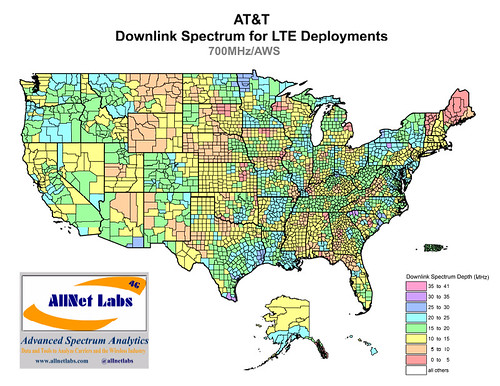Qualcomm Facing $1B Potential Chinese Fine
Qualcomm could be hit with a fine as high as $1 billion, reports Fierce Wireless.
The San Diego-based company could also be forced to make concessions
that would negatively impact its licensing business. At least 30
foreign firms have come under the scrutiny of China’s 2008 anti-monopoly
law, reports Reuters. Qualcomm is the only major ongoing antitrust case in China involving a U.S. company and royalty fees.
Qualcomm’s prospects have been hampered by the National Development and Reform Commission’s (NDRC) 13-month investigation into the firm. An imminent decision in the case could force the company to pay fines potentially exceeding $1 billion and require concessions that would hurt its highly profitable business of charging licensing fees on phone chipsets that use its patents.
Qualcomm derives most of its profit from licensing fees and most of its revenue from sales of chipsets and modems. Qualcomm reportedly earned about half of its global revenue of $26.5 billion in China for the fiscal year that ended Sept. 28. Some observers believe that Qualcomm controls some 21% of LTE royalties.
President Barack Obama, during his recent visit to China, pushed his Chinese counterpart, Xi Jinping, on the use of Chinese antitrust policy to limit royalty fees for foreign companies. The push by Obama could alter China’s calculus on the issue, but it could just as well backfire. reports Fierce Wireless. It underscores the importance Washington places on China’s investigation.
The former deputy head of NDRC, Liu Tienan, was sentenced to life in prison earlier this month after convicting him of taking bribes and abusing his power, reports the NY Times.
China Mobile recently said it had 50 million LTE subscribers, with plans to have 150 million customers on the network by the end of next year and 300 million customers by the end of 2016. Their LTE network runs across a total of 130 megahertz of spectrum in the 1880-1900 MHz, 2320-2370 MHz and 2575-2635 MHz bands. China Unicom, the country’s No. 2 wireless carrier, said its 3G and LTE network attracted 4.9 million customers during Q3, while China Telecom, the country’s third-largest mobile operator, had 1.33 million LTE customers.
The latest edition of Ericsson’s Mobility Report predicts that 90 percent of the world’s population over six years old will have a mobile phone by 2020, with smartphone subscriptions forecast to top 6.1 billion by then.
Qualcomm’s prospects have been hampered by the National Development and Reform Commission’s (NDRC) 13-month investigation into the firm. An imminent decision in the case could force the company to pay fines potentially exceeding $1 billion and require concessions that would hurt its highly profitable business of charging licensing fees on phone chipsets that use its patents.
Qualcomm derives most of its profit from licensing fees and most of its revenue from sales of chipsets and modems. Qualcomm reportedly earned about half of its global revenue of $26.5 billion in China for the fiscal year that ended Sept. 28. Some observers believe that Qualcomm controls some 21% of LTE royalties.
President Barack Obama, during his recent visit to China, pushed his Chinese counterpart, Xi Jinping, on the use of Chinese antitrust policy to limit royalty fees for foreign companies. The push by Obama could alter China’s calculus on the issue, but it could just as well backfire. reports Fierce Wireless. It underscores the importance Washington places on China’s investigation.
The former deputy head of NDRC, Liu Tienan, was sentenced to life in prison earlier this month after convicting him of taking bribes and abusing his power, reports the NY Times.
China Mobile recently said it had 50 million LTE subscribers, with plans to have 150 million customers on the network by the end of next year and 300 million customers by the end of 2016. Their LTE network runs across a total of 130 megahertz of spectrum in the 1880-1900 MHz, 2320-2370 MHz and 2575-2635 MHz bands. China Unicom, the country’s No. 2 wireless carrier, said its 3G and LTE network attracted 4.9 million customers during Q3, while China Telecom, the country’s third-largest mobile operator, had 1.33 million LTE customers.
The latest edition of Ericsson’s Mobility Report predicts that 90 percent of the world’s population over six years old will have a mobile phone by 2020, with smartphone subscriptions forecast to top 6.1 billion by then.







